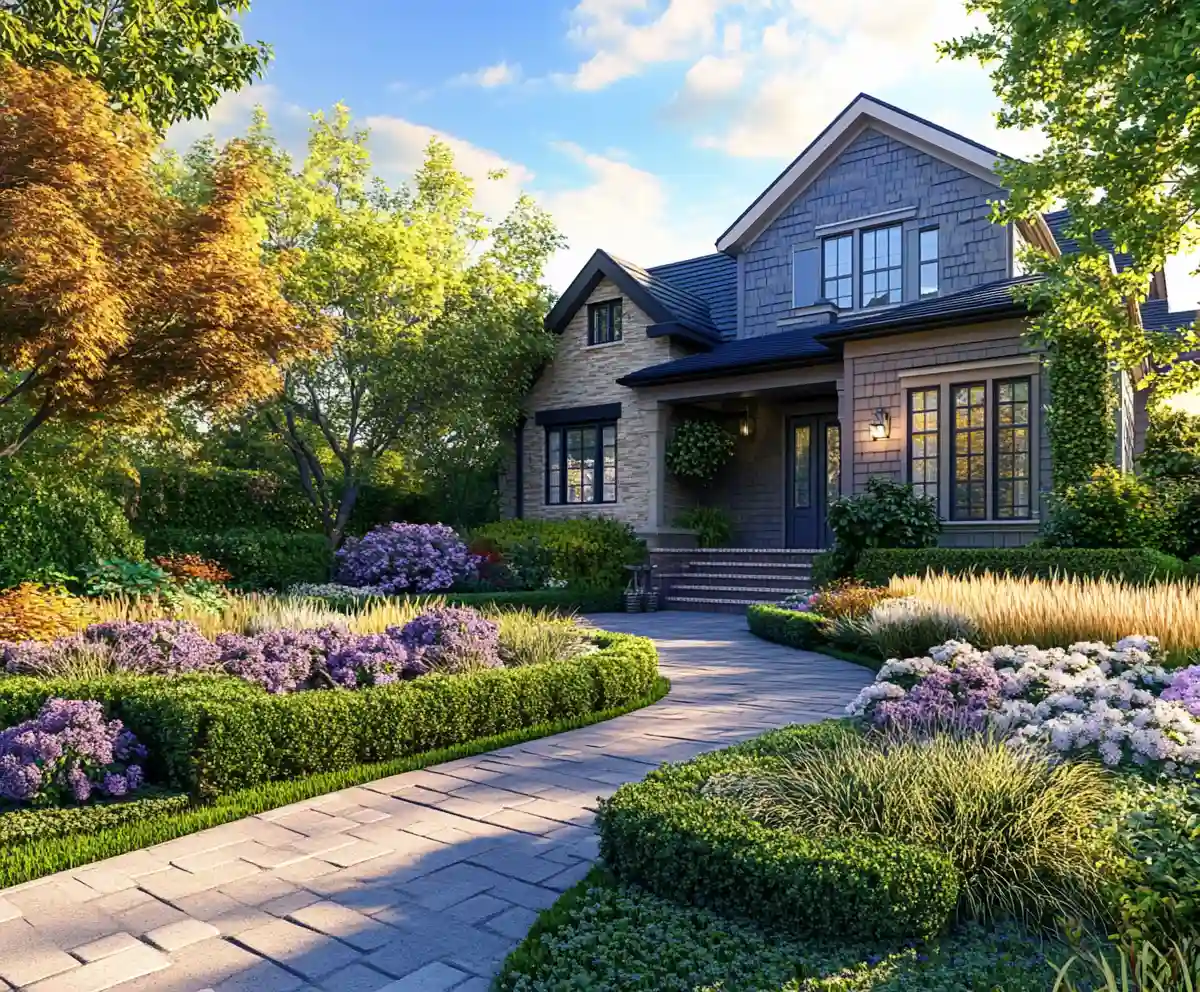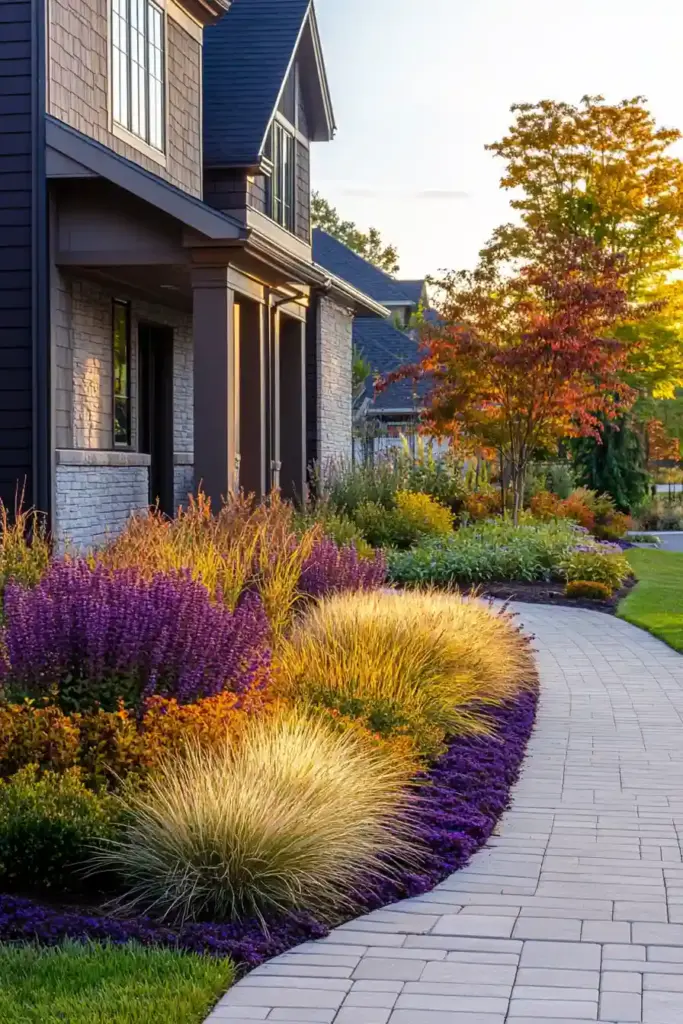Foundation plants are the backbone of any welcoming front yard, creating a cohesive look that complements your home’s exterior. When thoughtfully chosen, shrubs for front of house serve as the perfect foundation plants—adding structure, color, and year-round interest. These carefully selected shrubs for front of house help soften hard edges, conceal unattractive areas around the home’s base, and dramatically enhance curb appeal.
Whether you’re drawn to evergreen shrubs for front of house, vibrant flowering varieties, or low-maintenance options like ornamental grasses, the key is to choose foundation plants that match your local climate and architectural style. Explore our full list of best shrubs for front of house to build a front yard landscape that’s as beautiful as it is functional.
🌿 Love gardening inspiration? Follow me on Pinterest for bold plant ideas, tips, and seasonal color!
Table of Contents
Choosing the Right Foundation Plants: Key Factors to Consider
Selecting the best foundation plants for your front yard isn’t just about picking pretty blooms. It’s about finding greenery that works well with your home’s architecture, local conditions, and personal preferences. Here are the top considerations to keep in mind:
- Climate and Hardiness: Make sure your chosen plants can handle the local temperature swings and seasonal changes. Check hardiness zones or consult a local nursery to ensure long-term success.
- Soil Type and Drainage: The quality and composition of your soil significantly affect plant health. Perform a quick soil test to identify pH levels, and amend the soil if necessary to support the root systems.
- Sunlight Exposure: Observe how much sun your front yard receives, whether it’s full sun, part sun, or shade. Some plants thrive under intense light, while others prefer a bit of protection.
- Plant Height and Spread: Foundation plants should enhance your home’s façade rather than overpower it. Opt for varieties that won’t outgrow their allotted space or block windows and walkways.
- Color and Texture: A visually appealing design often combines different textures and leaf shapes. Balance evergreen shrubs with pops of colorful foliage or flowers to maintain year-round interest.
- Maintenance Needs: Consider how much time you can dedicate to pruning, watering, and fertilizing. If you’d rather have a low-maintenance yard, look for drought-tolerant or slow-growing varieties.
Top Foundation Plant Selections
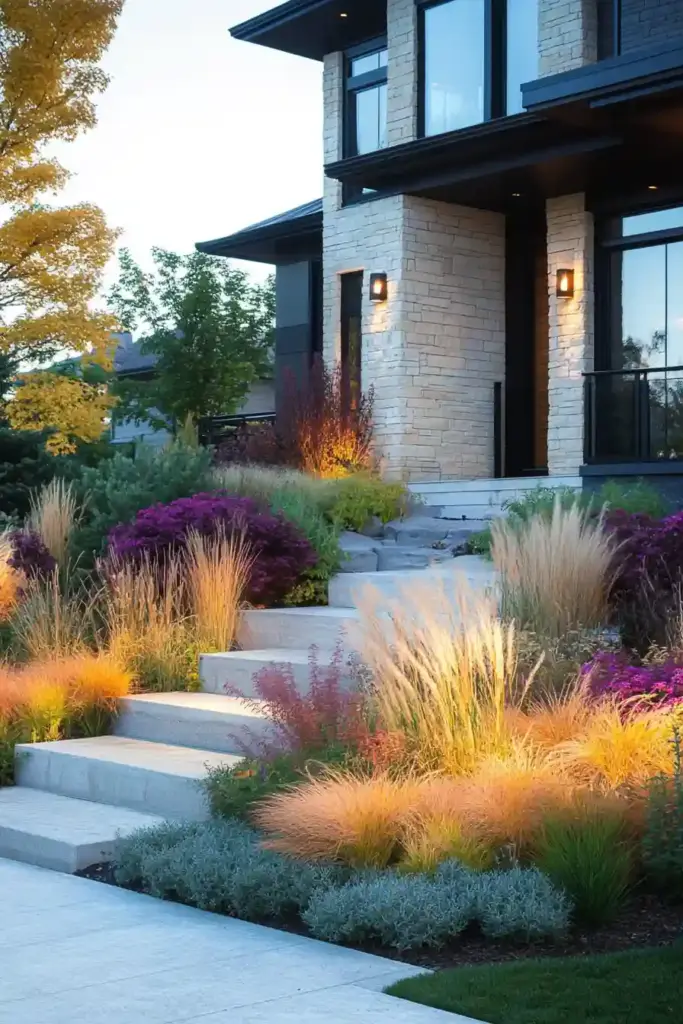
Once you’ve clarified your goals and site conditions, it’s time to explore specific plant choices. The best foundation plants for your front yard often include a mix of evergreens for structure, flowering shrubs for color, and low-profile perennials to fill gaps. Below are some popular categories, each with its own advantages and aesthetic appeal.
Evergreen Shrubs: Year-Round Appeal
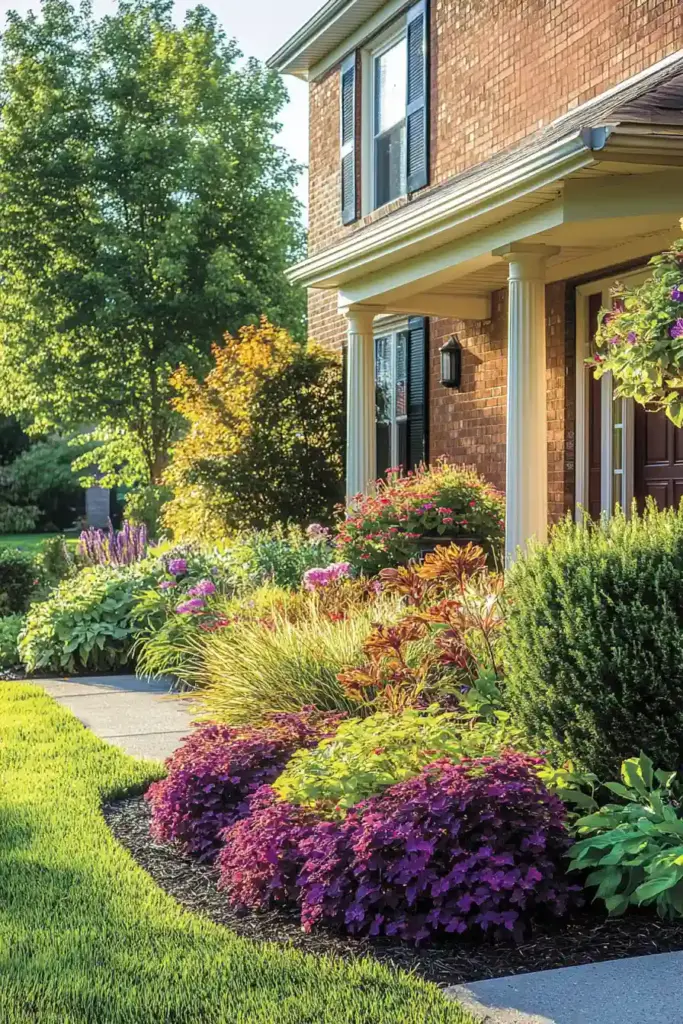
- Boxwood: Renowned for its dense foliage and formal look, boxwood works well in hedges or as individual shrubs. It provides solid structure through every season.
- Holly: Known for glossy leaves and red berries, holly offers both visual interest and wildlife benefits. Dwarf varieties are suitable for smaller spaces near your home’s foundation.
- Yew: Hardy, shade-tolerant, and easily pruned into shapes, yews can lend a neat and orderly appearance to your front yard.
Flowering Shrubs: Seasonal Pops of Color
- Hydrangea: Large blooms bring lush color and texture. They thrive in partial shade, making them perfect for areas that get morning sun and afternoon shade.
- Azalea: Famous for vibrant springtime blossoms, azaleas come in a spectrum of pink, white, and red hues. Just ensure they have acidic soil and proper drainage for long-term health.
- Rhododendron: Closely related to azaleas, rhododendrons produce large, eye-catching clusters of flowers. They also prefer acidic, well-draining soil and partial shade.
Ornamental Grasses: Texture and Movement

- Feather Reed Grass: Tall, slim plumes add vertical interest. This grass is relatively low-maintenance, adapting well to various soil conditions.
- Fountain Grass: Soft, arching foliage creates gentle motion in the breeze. Its cascading form breaks up the hard edges along your home’s foundation.
- Blue Fescue: Dwarf varieties offer a pleasant blue-gray hue that contrasts beautifully with deeper green shrubs.
Perennial Ground Covers: Filling in the Gaps
- Hosta: Ideal for shady spots, hostas feature large, lush leaves in variegated patterns. They’re perfect for adding depth at ground level around taller shrubs.
- Creeping Phlox: Delicate, star-shaped flowers carpet the ground in a burst of spring color. It’s an excellent option for softening edges near walkways and borders.
- Sweet Alyssum: Low-growing clusters of tiny blossoms emit a gentle fragrance. They’re a charming way to brighten up any bare patches along your home’s foundation.
Practical Steps for Planting and Maintenance
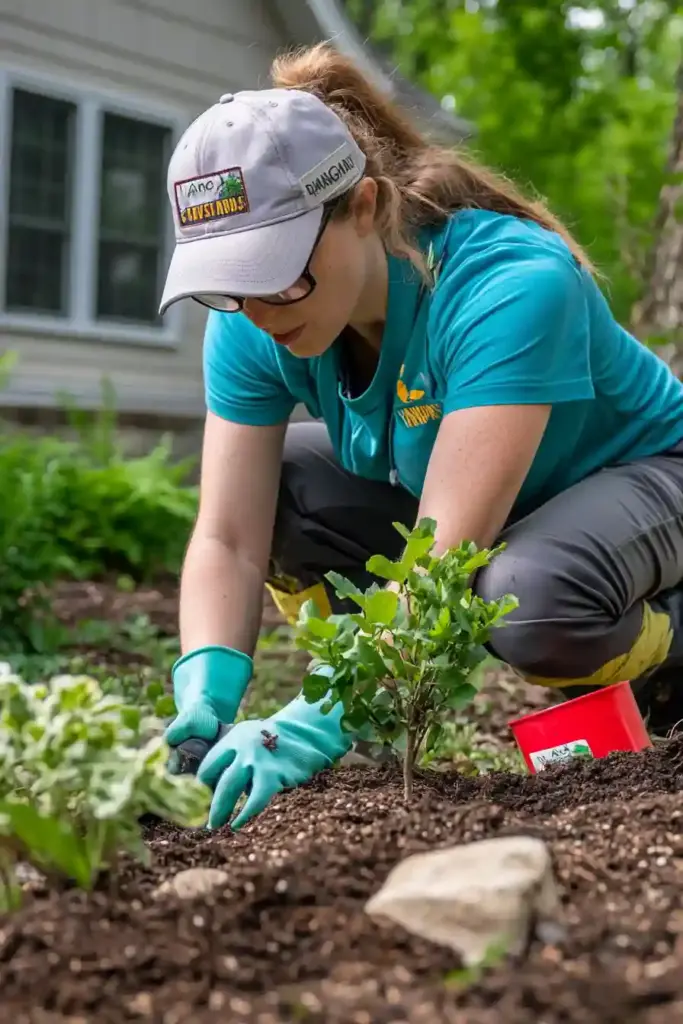
Once you’ve zeroed in on the best foundation plants for your front yard, it’s time to plan and maintain them properly. By focusing on soil preparation, strategic placement, and consistent care, you’ll ensure your new greenery stays healthy and vibrant for years to come.
- Soil Preparation
- Test and Amend: Use a basic soil test kit to identify nutrient deficiencies or pH imbalances. Amend the soil with compost or peat moss as needed.
- Loosen the Soil: Aerate or loosen compacted areas to improve root penetration and drainage.
- Add Organic Matter: Mix in organic materials like well-rotted manure or leaf mold to enhance fertility and texture.
- Planting Technique
- Dig Proper Holes: Aim for a hole that’s roughly twice the width of the root ball and just as deep. This allows roots to spread naturally.
- Position Carefully: Place the plant so the top of the root ball is level with the surrounding soil. Avoid planting too deeply, which can suffocate roots.
- Refill & Water: Gently backfill with a soil-compost mix, then water thoroughly to settle the soil.
- Regular Watering and Fertilization
- Deep, Infrequent Watering: Encourage strong root growth by giving plants a slow, deep soak rather than frequent light sprinklings.
- Mulch to Retain Moisture: A layer of organic mulch around the base helps regulate soil temperature and prevent moisture loss.
- Seasonal Feeding: Most shrubs and perennials benefit from a balanced, slow-release fertilizer in spring. Check specific plant needs for best results.
- Pruning and Disease Prevention
- Shape & Maintain Health: Trim away dead or diseased branches, and prune for size control as needed. Avoid excessive pruning, which can stress the plant.
- Watch for Pests & Fungal Issues: Inspect leaves and stems regularly. Early detection of pests or diseases allows you to treat problems before they spread.
- Sanitize Tools: Clean pruning shears and garden tools between uses to prevent disease transmission.
Design Ideas and Layout Tips
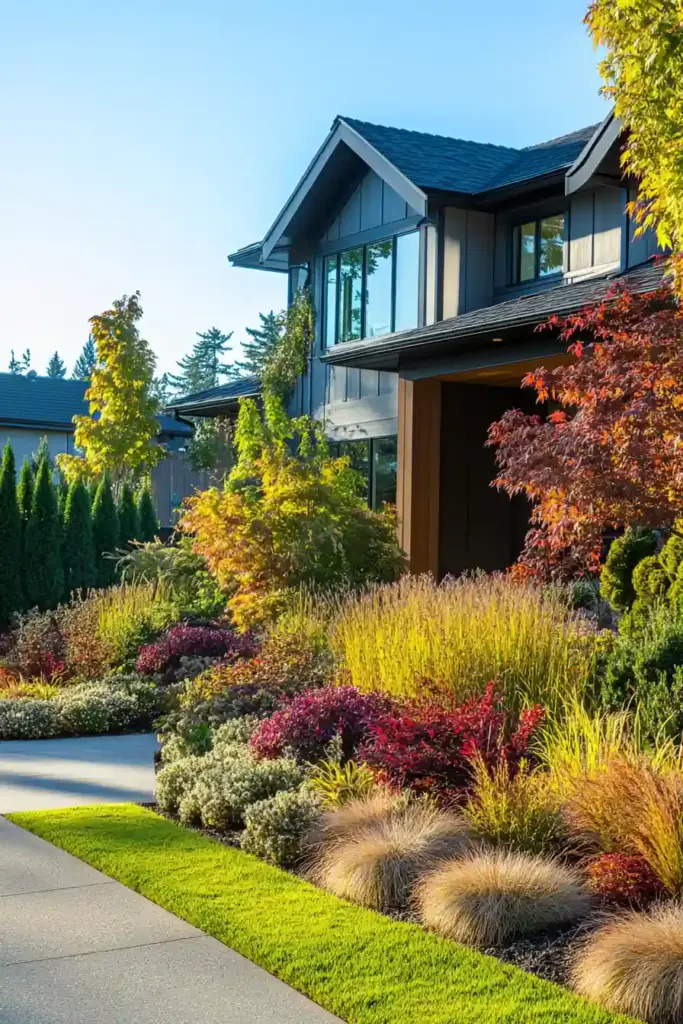
Crafting a cohesive front yard design with the best foundation plants for your front yard goes beyond picking the right shrubs and flowers. It’s about weaving these elements together for a balanced, unified look. Here are a few design strategies to guide your efforts:
- Layering for Depth
- Tall in Back, Short in Front: Place taller evergreens closest to your home’s walls, with medium-height shrubs in front of them, and finish with lower-growing plants along walkways or borders.
- Vary Foliage Textures: Combine smooth, glossy leaves with wispy grasses or broad-leafed plants for visual interest.
- Seasonal Interest
- Mix Evergreen and Deciduous Plants: This approach keeps your foundation beds appealing year-round. Evergreens offer structure in colder months, while deciduous shrubs or perennials introduce vibrant color in spring and summer.
- Interplant Seasonal Bloomers: Add bulbs or annuals that bloom at different times to ensure a steady display of color throughout the year.
- Creating Focal Points
- Feature Statement Shrubs: Draw attention to your front door by placing a standout plant—like a flowering hydrangea or holly—near the entrance.
- Highlight with Lighting: Low-voltage landscape lights or spotlights can showcase specimen plants and enhance nighttime curb appeal.
- Balancing Symmetry and Flow
- Coordinate with Home Architecture: Use symmetrical plantings for more traditional homes, or opt for asymmetrical groupings to match contemporary designs.
- Use Pathways to Connect Spaces: A well-placed path or walkway can tie together foundation beds, flower borders, and other elements of your landscape.
Conclusion
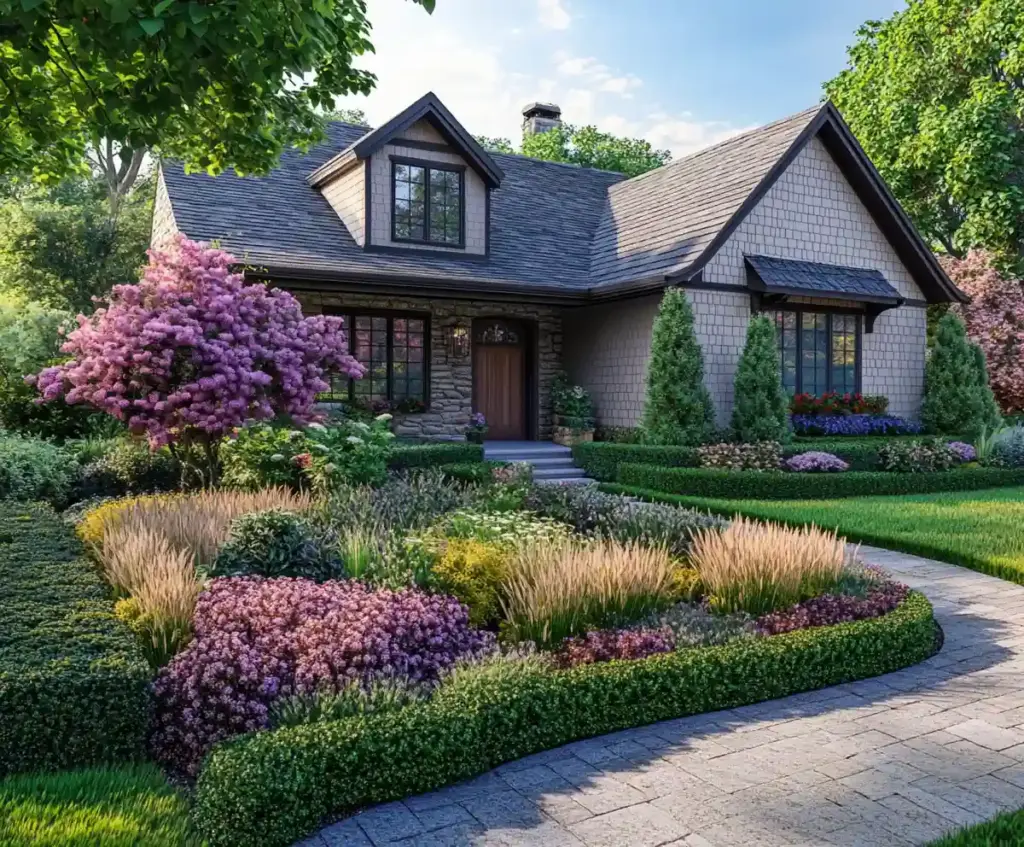
Choosing the best foundation plants and shrubs for front of house is one of the smartest ways to boost curb appeal, support pollinators, and add year-round beauty to your landscape. By selecting shrubs for front of house that thrive in your region, layering heights for depth, and mixing evergreens, flowering shrubs, and low-growing ground covers, you create a cohesive and welcoming entryway that reflects your personality and enhances the neighborhood.
A consistent care routine will keep your shrubs for front of house looking polished and vibrant through every season. Explore our complete guide to the best shrubs for front of house to transform your yard into a lasting expression of natural beauty and curbside charm.
🌿 Frequently Asked Questions
1. What makes a good foundation plant?
A good foundation plant offers structure, year-round appeal, and complements your home’s architecture. The best choices are typically shrubs for front of house like Boxwood, Dwarf Alberta Spruce, or ornamental grasses. These plants should be hardy, easy to maintain, and provide a tidy appearance without overwhelming the space. For more suggestions, explore our foundation plant guide.
2. What should you not plant near a foundation?
Avoid planting trees or large aggressive-rooted shrubs too close to your home, as their roots can interfere with pipes or cause foundation cracks over time. When selecting shrubs for front of house, steer clear of species that grow too tall or wide, and opt instead for compact, non-invasive varieties. Our front yard shrub spacing guide can help you plant confidently and safely.
3. Does having plants near the house foundation damage it?
Properly selected and spaced shrubs for front of house will not damage your foundation. In fact, they can protect your home by absorbing rainwater and reducing soil erosion. The key is to maintain airflow, avoid overwatering near the base, and choose plants with well-behaved root systems. See our guide to foundation-safe shrubs for peace of mind.
4. How tall should foundation plants be?
As a general rule, foundation shrubs for front of house should not exceed one-third the height of your home’s first floor. Low-growing varieties are ideal for windows and entryways, while medium-height shrubs can provide balance and layering. Learn how to layer shrubs by height for the most polished effect in your front yard landscaping.

